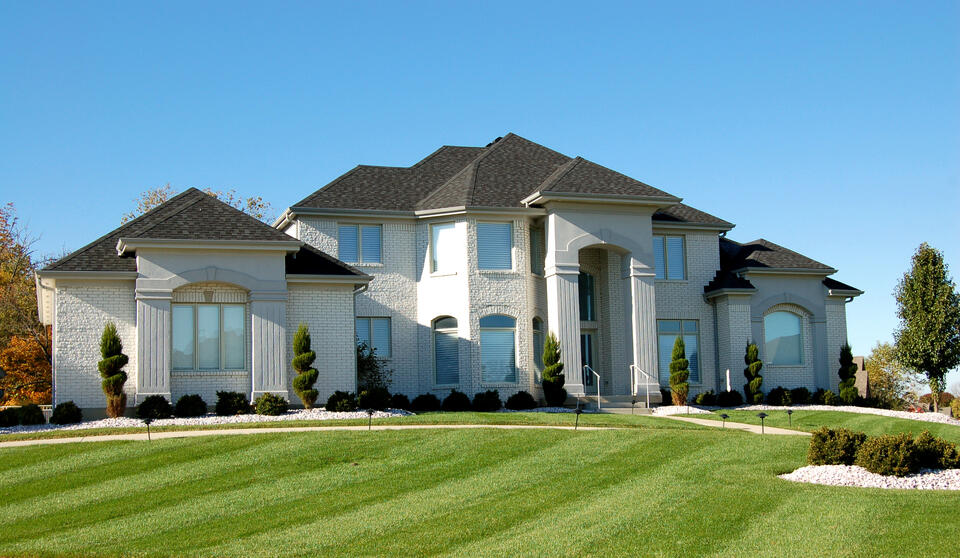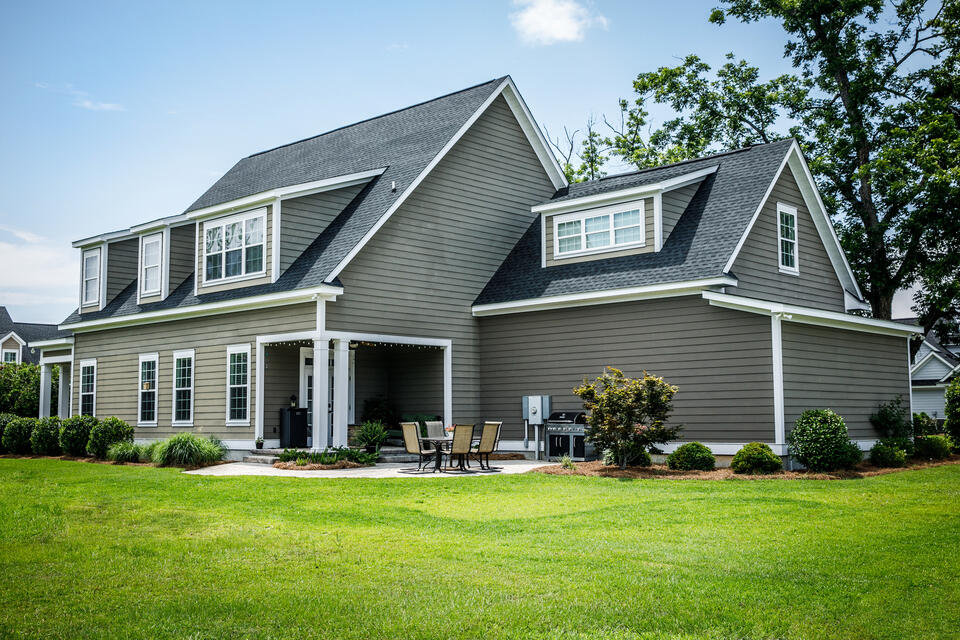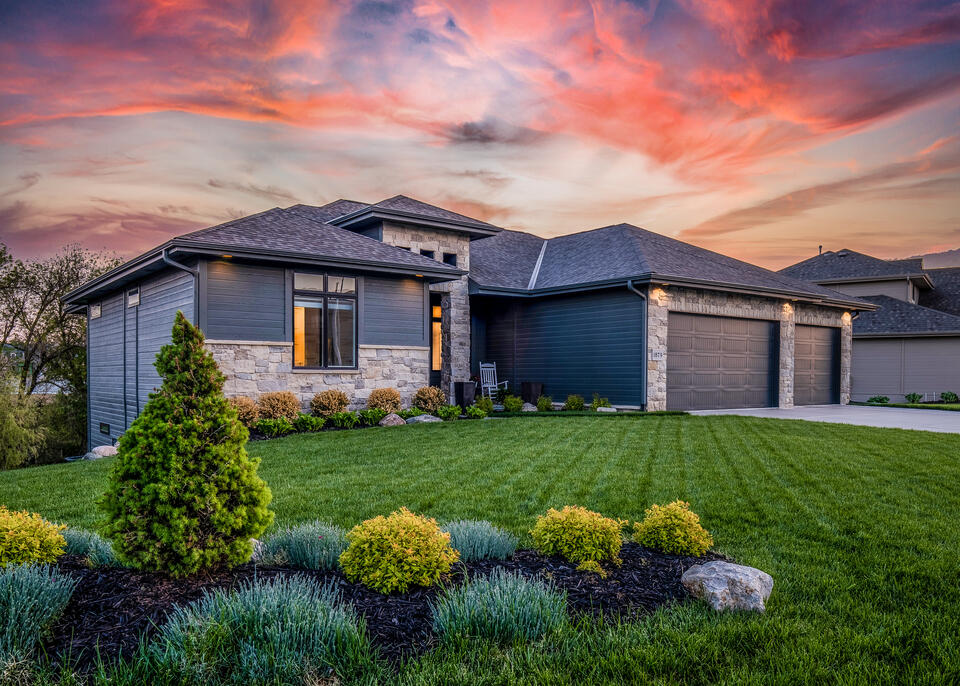Hip Roof Vs Gable Roof: What’s The Difference?
Choosing a roof design for your home requires understanding the differences between hip roofs and gable roofs. Both styles have distinct features and benefits, influencing not only the aesthetic appeal of your house but also its structural integrity and functionality. Hip roofs, characterized by their four-sided symmetry, offer enhanced stability and resistance to high winds. In contrast, gable roofs, known for their triangular shape, provide excellent ventilation and are often less expensive to build. Deciding between these two popular roofing styles involves considering factors such as climate, budget, and personal preference. In this blog, we’ll discuss the key differences between hip roofs and gable roofs to help you make an informed decision for your next roofing project, including:
- What is a hip roof?
- What is a gable roof?
- 5 comparisons between hip roof vs gable roof
- Factors to consider when choosing between a hip roof and a gable roof
🤔 What is a Hip Roof?

A hip roof is a type of roofing design characterized by slopes on all four sides that meet at the top to form a ridge. Unlike gable roofs, which have two sides, hip roofs create a more aerodynamic shape, making them particularly effective in areas prone to high winds. Types of hip roofs include:
- Pavilion
- Half-Hip
- Dutch Gable
- Mansard
- Tented
Characteristics of a Hip Roof
Hip roofs have several distinct features:
- Sloped Design: All sides of the roof slope downward, which helps with water drainage and snow shedding.
- Stability: The design provides greater stability and structural integrity compared to other roof types, making them less likely to be damaged in severe weather.
- Variety of Styles: Hip roofs can come in various styles, including simple hip, cross-hip, and half-hip, allowing for flexibility in architectural design.
Typical Use Cases and Average Costs
Hip roofs are commonly used in residential buildings, particularly in suburban and rural homes. They are ideal for homes in areas with heavy rainfall or snowfall due to their effective water drainage capabilities. The average cost of installing a hip roof can vary widely, typically ranging from $4,000 to $15,000, depending on factors such as size, materials, and labor costs. Overall, investing in a hip roof can enhance both the aesthetic appeal and durability of a home.
🏠 What is a Gable Roof?

A gable roof is a popular architectural design characterized by two sloping sides that meet at a ridge, forming a triangular shape at each end. This classic roof style is not only aesthetically pleasing but also highly functional, providing effective rain and snow runoff. According to roofing contractors in Kansas City, a gable roof is just as popular as a hip roof and, just like a hip, there are different types of gable roofs:
- Gambrel
- Open Gable
- Box Gable
- Flying Gable
- Cross-Gabled
Characteristics of a Gable Roof
Gable roofs are defined by their steep pitch, which allows for better drainage and minimizes the chances of water pooling. They often feature overhanging eaves that protect the walls from the elements. Additionally, gable roofs can be designed with various materials, including shingles, tiles, or metal, offering versatility in appearance and durability.
Typical Use Cases and Average Costs
Gable roofs are commonly used in residential homes, garages, and some commercial buildings due to their efficient design and cost-effectiveness. The average cost of constructing a gable roof can vary based on size, materials, and labor, typically ranging from $6,000 to $12,000 for a standard residential property.
⚖️ 5 Comparisons Between Hip Roof Vs Gable Roof
When choosing between a hip roof and a gable roof, it’s essential to understand their key differences in structure, design, durability, maintenance, and cost. Here’s a breakdown of the main differences:
1. Structure and Design
- Hip Roof: A hip roof features slopes on all four sides, creating a more stable and aerodynamic shape. This design helps to distribute weight evenly, making it less likely to collapse under heavy snow or high winds. Additionally, the sloped design allows for better drainage, reducing the risks of water pooling or structural damage.
- Gable Roof: In contrast, a gable roof is characterized by two sloping sides that meet at a ridge, forming a triangular shape at each end. While this design is visually appealing and offers increased attic space, it can be less stable in severe weather. Gable roofs are prone to wind damage if not properly braced, as the triangular shape can act like a sail, catching strong winds.
2. Durability
- Hip Roof: Generally more durable, hip roofs can withstand high winds and severe weather conditions due to their enclosed design. The slopes help to minimize wind resistance, making them a popular choice in hurricane-prone areas. Furthermore, the design reduces the likelihood of leaks, as there are fewer exposed seams.
- Gable Roof: While gable roofs are still durable, they may be more susceptible to damage in extreme weather. High winds can lift the roof off if it lacks adequate bracing, and the exposed joints at the gable ends can become points of failure during heavy storms. Homeowners in regions prone to severe weather may need to reinforce their gable roofs for added protection.
3. Maintenance
- Hip Roof: Hip roofs may require less maintenance over time, primarily due to their fewer exposed edges and seams. The design minimizes potential leak points, leading to a longer lifespan and less frequent repairs. However, accessibility for cleaning and inspection might be more challenging due to the roof’s height and complexity.
- Gable Roof: On the other hand, gable roofs are often easier to inspect and repair because of their simple structure. Homeowners can access the roof’s peak without much difficulty. However, the joints at the gable ends may require more frequent maintenance to prevent leaks, especially if flashing is not properly installed or maintained.
4. Cost
- Hip Roof: Typically more expensive to construct, hip roofs require additional materials and labor due to their complexity. The extra slopes mean more roofing material is needed, which can drive up the overall cost. However, the long-term benefits of durability and lower maintenance costs can offset the initial investment.
- Gable Roof: Gable roofs are usually more budget-friendly, thanks to their simpler design and fewer materials required for construction. This cost-effectiveness makes them a popular choice for many homeowners, especially those on a tight budget. However, it’s essential to consider potential long-term maintenance costs when evaluating overall value.
5. Aesthetic Appeal
- Hip Roof: Offering a modern and elegant look, hip roofs blend well with various architectural styles, from contemporary to traditional. The smooth lines and symmetrical appearance can enhance the overall curb appeal of a home, making it stand out in the neighborhood.
- Gable Roof: In contrast, gable roofs provide a classic and traditional appearance that many homeowners find appealing. The distinctive triangular shape evokes a sense of nostalgia and charm, making it a popular choice for various architectural designs. While it may not have the same modern flair as a hip roof, its timeless aesthetic remains a favorite among many.
💡 Factors to Consider When Choosing Between a Hip Roof and a Gable Roof

When deciding between a hip roof and a gable roof, several important factors should be taken into account to ensure the best fit for your needs.
- Climate and Environmental Conditions: The climate in your area plays a crucial role in roof selection. Hip roofs, with their sloped sides, are often more effective in shedding snow and rain, making them a better choice for regions that experience heavy precipitation or snow. Conversely, gable roofs are more suitable for dry climates, where they can provide excellent ventilation and airflow.
- Architectural Style and Aesthetic Preferences: The design of your home should influence your roof choice. Hip roofs offer a more modern, sophisticated look, while gable roofs are often associated with traditional or cottage-style homes. Consider how each option aligns with your architectural vision and the overall aesthetic of your property.
- Long-term Maintenance and Repair Implications: Maintenance requirements can differ significantly between hip and gable roofs. Hip roofs may require more upkeep due to their complexity and the potential for more joints and seams. On the other hand, gable roofs can be easier to repair and maintain due to their simpler design. Assess your willingness to invest time and resources into roof maintenance when making your decision.
By considering these factors, you can make an informed choice that best suits your home and lifestyle.
🙌 Choosing the Right Roof: Expert Guidance from Shamrock Roofing and Construction
When deciding between a hip roof and a gable roof, it’s essential to consider the architectural style, climate conditions, and long-term maintenance needs of your home. Each roof style has its unique benefits and potential drawbacks, but your decision ultimately hinges on personal preferences and practical considerations. At Shamrock Roofing and Construction, we understand the importance of these choices and offer expert guidance to help you select the perfect roofing option for your needs. Our team of skilled professionals provides top-notch craftsmanship, ensuring both durability and aesthetics for your home. Trust in Shamrock Roofing for a seamless roofing experience. Contact us today for a consultation and let us bring your roofing vision to life!
